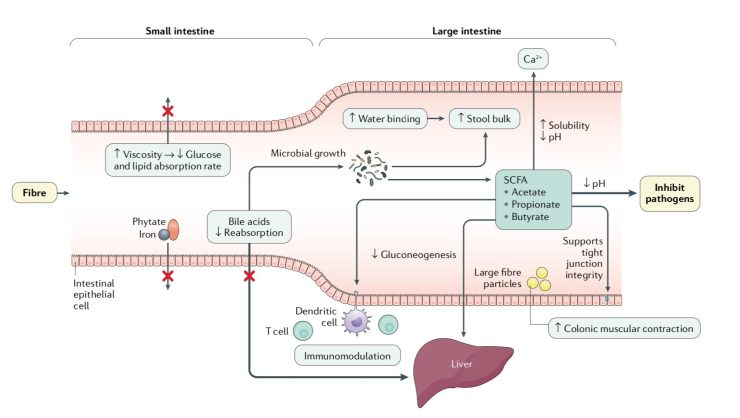Not all fibre is made equal! Forget ‘insoluble’ vs ‘soluble’ fibre – it’s outdated and NOT accurate.
The focus on fibre used to just be about ‘helping you poop’ but it’s so much more than that! Filling up on fibre is linked to better overall health and reduced risk of more than 70 chronic diseases, including heart disease, type 2 diabetes and several cancers.
In my team’s new paper King’s College London, we dive into the different traits of many dietary fibres and how each can impact gut health and our ‘good’ bacteria – and conditions like constipation, IBS, IBD and more.
In short, we found that different types of fibre act VERY differently in the gut – and different fibre can change the types of microbes living in our gut.
So if you see anyone talking about ‘only eating soluble fibre’ or ‘reducing insoluble fibre for diarrhoea’, just know that’s really not helpful! Then share this post.
The bottom line: Most fibre-filled foods actually have a mix of different types of fibre, so diversity really is king! You see, your gut microbes can be fussy eaters… they each like to eat different types of fibre.
So mixing up your plant foods and aiming for 3️0 plant points a week (that’s 30 different types of fruit, vege, wholegrain, legumes, nuts, seeds, herbs and spices) will mean you’re getting plenty of diverse fibre goodness to nourish your inner community of gut microbes.
Now if you want to get real sciencey…
What are the different types of fibre we should know about? You’ll hear me talking about resistant starch, psyllium, prebiotic fibre, oat fibre, etc… all very different and fibre types in their own right!
Essentially there are 3 main traits that affect what a fibre does…
- Solubility (i.e. whether it dissolves in water)
- Viscosity (i.e. fluidity or ‘thickening’ ability)
- Fermentability (i.e. is it ‘digested’ by our gut bacteria)















